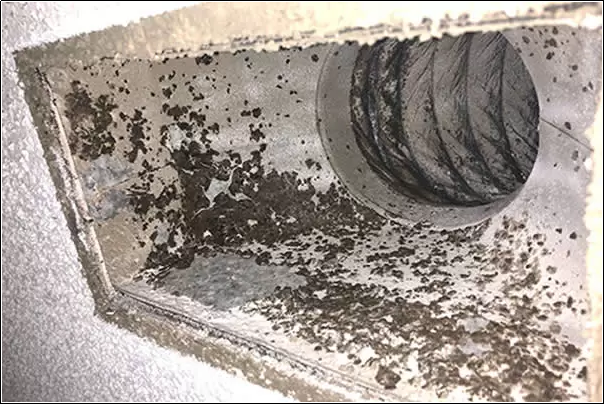Molds are the natural part of the environment which you can find almost anywhere that moisture and oxygen are present. You might have seen black spores of mold inside your home and building. Bathrooms and basements are the most common place for mold growth. When it comes to air ducts, many people often ask, is it normal to have mold in air ducts? Mold can also be found in other areas, including the HVAC system, responding to this question. Finding mold in air ducts is especially concerning, as the system will circulate mold spores throughout the property.
However, knowing if there is mold in the air duct might be daunting since it is not apparent from the outside. But, you can look for some telltale signs to determine whether there’s a mold or not. Continue reading to learn about what causes the mold to grow, symptoms to look for, and prevention.
What Encourages Mold Growth In Air Ducts?
The HVAC system’s components contain moisture and warm temperature, providing favorable conditions for the mold to grow. A humid climate and poor ventilation cause condensation, which becomes an ideal source for the mold to develop. If ducts aren’t checked often, the mold will consistently grow if it’s present. It’s advisable to call the professionals once a month for air duct cleaning in Rocklin to avoid mold growth and maintain the HVAC system’s function smoothly.
Symptoms Of Mold In Air Ducts
Look out for the following indicators for mold growth in air ducts:
Musty Odor:
Detecting the mold from the outside isn’t easy. Therefore, look for the unusual or musty odor, as it’s the first sign of mold in air ducts. If you notice a smelly odor when your air conditioner is turned on, get it checked out instantly by the HVAC professionals.
Black Dust:
The black dust in or around air ducts indicates the presence of mold. This dust is harmful and isn’t easy to wipe off, as it may circulate the mold spores with the conditioned air into your rooms. If you notice it, call the professionals and turn off your HVAC to prevent it from spreading.
Visible Mold:
Inspect your intake vents, ducts, and drip pans, as they provide an ideal environment for mold growth. Mold circulates in the form of tiny particles that can’t be seen with a naked eye. If you notice visible signs of mold, it might cause severe infestation, which requires a prompt solution.
Allergy-Like Symptoms:
Mold growth can trigger health problems for whomsoever is exposed to it. It can cause allergy-like symptoms such as headaches, nausea, irritated nose and throat, and itchy eyes.
How To Get Rid Of Mold In Air Ducts
Here we have enlisted a few ways to prevent mold growth.
Use Good-Quality Air Filters:
Consider using good-quality air filters to prevent harmful chemicals from circulating throughout your room. Clean them every two weeks and replace them after three months.
Clean Drip Pans Regularly:
Check and clean your HVAC system’s drip pans regularly. Water accumulation in the drip pans leads to mold growth. After cleaning, ensure they are dry.
Inspect for leaks in the air ducts:
Inspect your air ducts for leaks and seal if you find them. Leaks in your attic or roof may damage your ducts, resulting in mold production. Don’t overlook any leakage in your house. Consider fixing them by professionals as soon as possible.
Maintain Indoor Humidity Level:
Moisture is the leading source of mold development. Therefore, it’s vital to pay attention to the humidity level in your house. Keep the humidity level below 50% to prevent mold growth.

